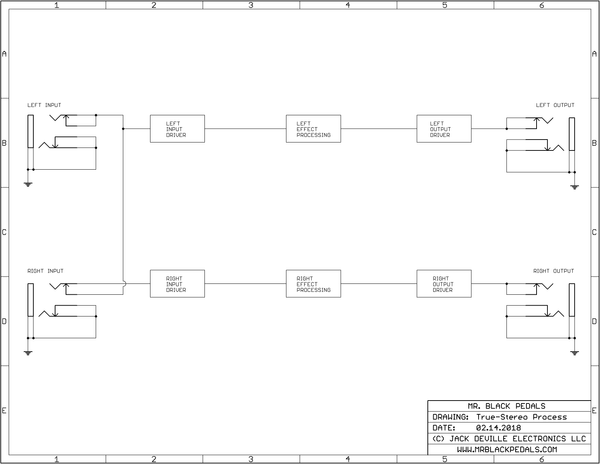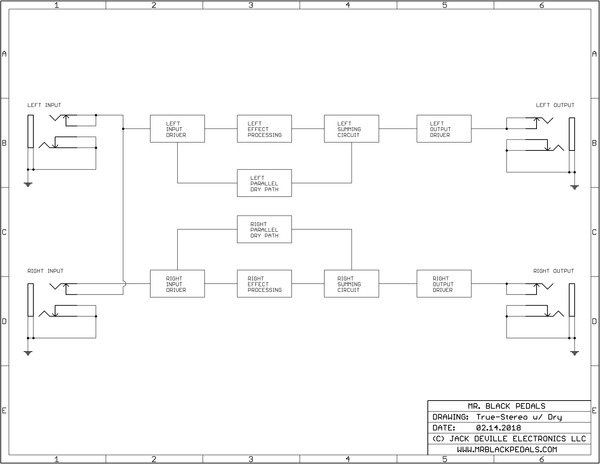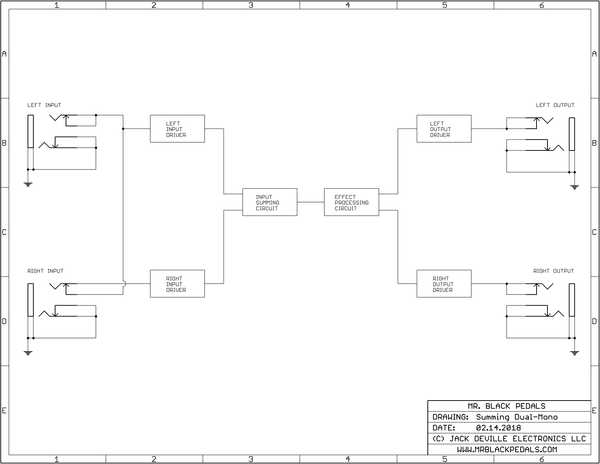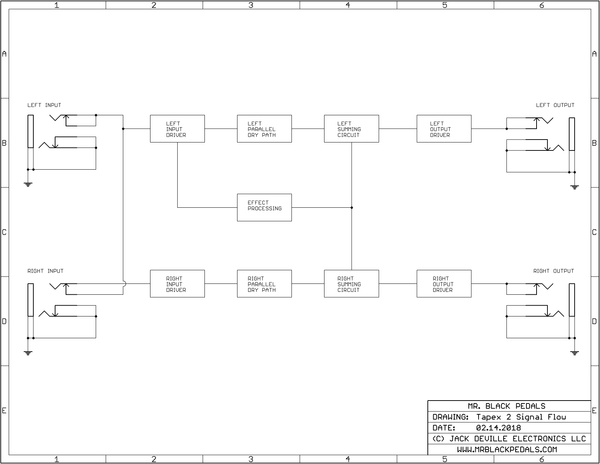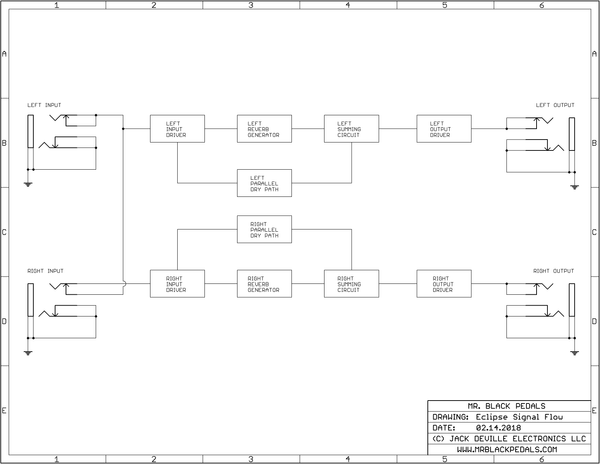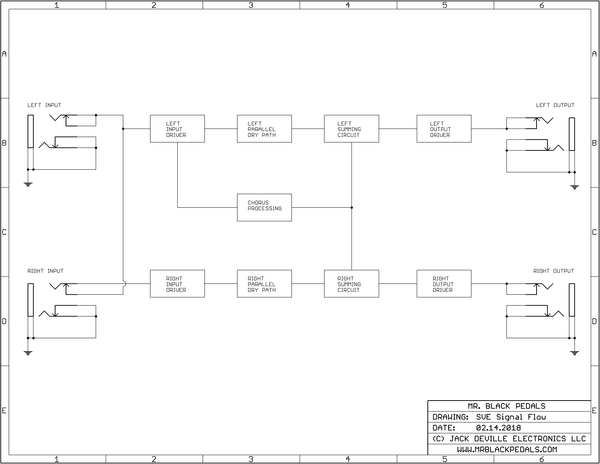Second to One: A word about "Stereo Pedals" and the B.S. surrounding so many so-called "Stereo" processes
Man oh man. To say I've got something for you that may change your perspectives and make you think twice about how you plan and execute your pedal-board would not do this article justice.
I've got a lot to say here, and I'll do my best to keep it as concise and direct as possible; with that said: I am CERTAIN some people are not gonna like what they read here. FUCK IT. I've never been one to "go with the flow," and I have always caused trouble, wherever I am. I believe this article is gonna ruffle some feathers, soil some garments, and stain some egos, but sometimes the truth isn't as shiny and pretty as many would hope it to be. So let's get into it.
The Concept of Stereo
As you may be familiar, the vast majority of us were born with two ears, placed on either sides of our heads. I'm no biologist here, but I have found that one of the key benefits in having two sound inputs (a left and right if you will) to my central nervous system is the ability to locate a sound source with respect to my position in the physical world I am in.
That is to say: I can tell when someone is walking/talking/producing some type of sound to the right of me, behind me, to the left of me, or directly in front of me, as well as all the fine gradients in between, just by paying attention to the source of the sound. My brain calculates the rest and tells me where the sound is coming from automatically. Yup. That's what two functional ears and a minimally damaged sensory input system will afford you (or me in this case).
Well, in 2017 we started making stereo effects processors. And here's where things get fun and begin to get dirty (that's half the fun). You see, when we say we make Stereo Effects Processors, we actually mean we make STEREO EFFECTS PROCESSORS Not some fake "I can't believe it's not mono" bullshit, I mean actually Stereo, with TWO separate audio paths. And there is a difference as we will get into and detail here.
True-Stereo Processing
Let's start by having a quick look at the most basic Stereo (or True-Stereo as we call it) process/signal path.
In drawing below we have the most basic elements of a True-Stereo signal path:
Walk with me through this one. It's pretty simple.
An instrument is plugged into the LEFT INPUT jack and if no instrument is plugged into the RIGHT INPUT jack, the signal at the LEFT INPUT jack is automatically applied at the RIGHT INPUT jack, and subsequently the RIGHT INPUT DRIVER circuit (Pre-amp circuitry has been intentionally omitted from these illustrations to keep things as simple as possible; I don't wanna hear any bullshit about signal loss from splitting signal without proper drivers/impedances etc. I FUCKING KNOW. I design this shit for a living.).
Signal then flows through the left/right driver circuits and into their respective effect processing, then to their respective output drivers and finally to either the left or right output jack.
Pretty simple, right? This is TRUE-STEREO. We have TWO independent signal paths. Not the fake B.S. we will see shortly which is often marketed and sold as "Stereo." Let's keep focused on TRUE-STEREO for a moment longer.
The illustration above is the basic concept, but we've omitted any dry/un-effected signal. The illustration below shows the same TRUE-STEREO process, but now includes our dry support circuitry.
It looks pretty darned similar, except we have added in parallel dry processing for BOTH left and right channels, as well as summing circuits for each, and they are INDEPENDENT from one another. That is to say: Left and Right DO NOT MIX unless there is only one input source (left is primary input), which still produces independent processing of the left and right channels.
This is True-Stereo. Not fake-bullshit-faux-stereo. This is actually how a stereo system works, and that is very important. Burn this system into your mind. It will help a lot when planning and troubleshooting your stereo rig.
This system is largely how Mr. Black stereo pedals are designed and executed. We'll cover our own products in detail a little bit farther along in this article.
Let's move on to something all too common: NOT-stereo processes marketed and sold as stereo processes.
"I can't believe it's not mono!" (Summing Dual-Mono) Processing
Here we see what is often marketed and sold as "stereo," and to it's credit, there are two inputs and two outputs, but what is between those interfaces makes, or in this case, breaks it.
Ladies and gentlemen, let me introduce you to the Summing Dual-Mono process:
I know! It looks a lot like it could be stereo because it has left and right inputs, left and right drivers, and left and right outputs, but inside there is only one process creating the effect(s), after the left and right signals have been combined together into a mushy, blurry, brownish-grey stew (sounds great, huh?). Once we've created our gruel, we can then slop it into both outputs; because stereo is two outputs, right? Fucking hardly.
The above illustration is the basic system often marketed as stereo, when really it is not stereo at all. It is dual-mono at best. But, we could doctor it up a little so it seems more "stereo-ish" to those really inquisitive ears out there. Check it:
Now we're a little closer to a true-stereo system, because we have independent left and right Dry signal paths, but our effect processing is still happening in mono and just being split at the end to mimic a stereo process! I call 'em like I see 'em and that is NOT a stereo process: That's BULLSHIT!!
Believe it or not kids, the VAST majority of fancy-schmancy boutique "stereo effects" are designed this way. Some don't even isolate the dry signals as well as this illustration.
To say I was shocked to discover this is an understatement, and I didn't believe it at first, but with the right questions to the right people I verified it to be true as the blue sky above. Sad but True (but not True-Stereo, mind you).
Now, I'm not gonna name any names here (you can contact your favorite manufacturer and ask them about your favorite product), but this is VERY common, and is also VERY BULLSHIT.
Mr. Black Stereo and True-Stereo Effects
Here at Jack Deville LTD., I design the Mr. Black line of pedals from the ground up, and when I design stereo pedals, I actually design true-stereo pedals with TWO independent audio paths. Mono pedals are mono, duh.
At the time of this article, we have three stereo pedals in the line-up: The Tapex 2, the Supermoon Eclipse, and the Stereo Vintage Ensemble; each work a little different from one another, with some neat tricks occurring internally. Here's a quick little break-down of how they each operate (I am negating switching, presets, expression controls and all the other auxiliary circuits in an effort to keep the drawings simple and easy to understand). With that said, here we go!
Tapex 2:
While the Tapex 2 is a true-stereo process and circuit, the echo is only sampling/recording from the Left (primary) input. The Right channel is a straight pass-through with an echo at half time mixed in with the dry right source.
SuperMoon Eclipse:
The SuperMoon Eclipse is a True-Stereo effect processor with two fully independent signal paths and two simultaneous and complimentary reverbs sharing controls. I repeat: THE SUPERMOON ECLIPSE IS A TRUE-STEREO REVERB. You can literally run two instruments into each of the channels and they will remain separate, sharing only in controls.
PLEASE NOTE: The SuperMoon Eclipse's left and right outputs are 180° out of phase from one another, which enhances the stereo spread. We have found this to cause problems when fed directly into a summing dual-mono processor (1 + -1 = 0).
If you have experienced your Eclipse "killing" your other "stereo" pedals (which it does :P), know that the pedal being killed is NOT true-stereo and you can easily negate this by inserting a pedal that inverts phase (Such as the ZVEX Super Hard-On or EHX LPB-1, set to unity volume) directly after the right output, before the input of your summing dual-mono processor, or by simply putting the SuperMoon Eclipse last in your stereo effects chain.
Stereo Vintage Ensemble:
The Stereo Vintage Ensemble works much the same way that the Tapex 2 does, except it is a fantastic chorus pedal, rather than an echo.
Final thoughts and considerations:
I truly hope this article has been useful and informative for you, and thank you for taking however long it took you to read it. There are times that marketing overtakes and surpasses fact, and in the case of buzz words like "stereo," copy sure can be misleading. Here at Mr. Black, when we say True-Stereo, we actually mean True-Stereo.

